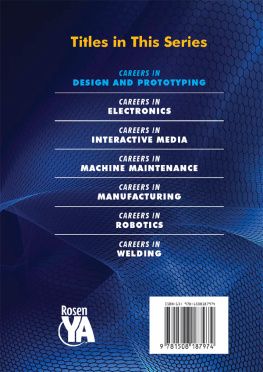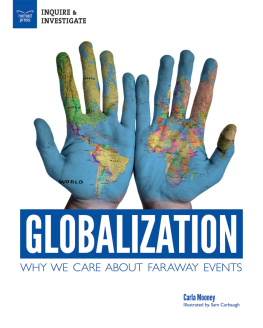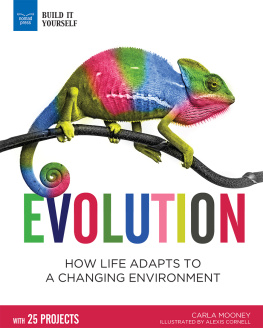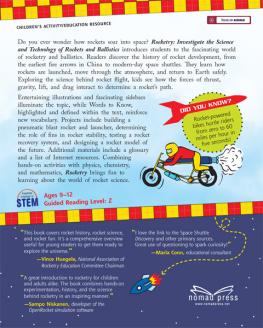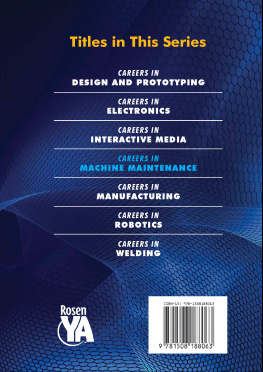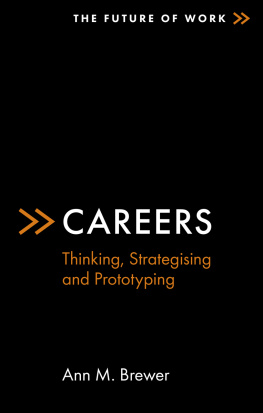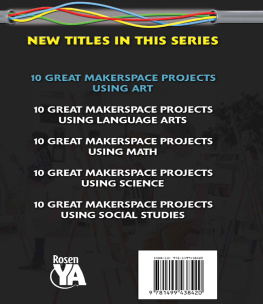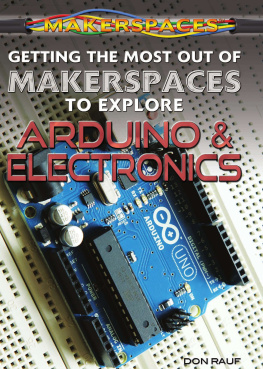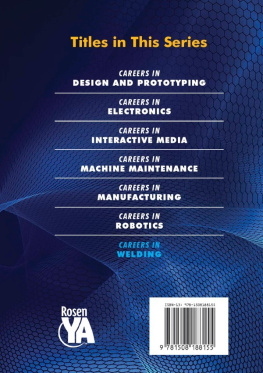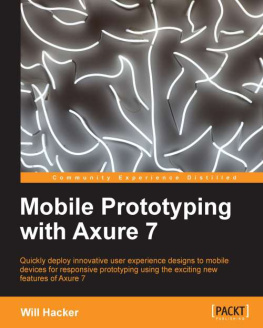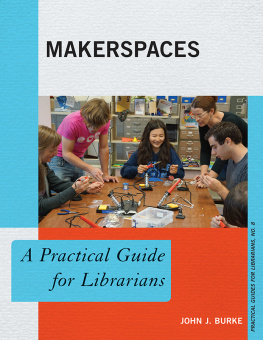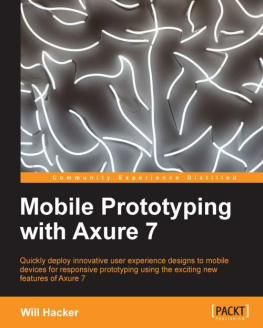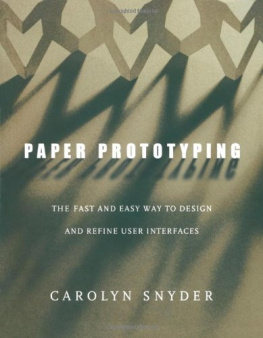Published in 2020 by The Rosen Publishing Group, Inc.
Copyright 2020 by The Rosen Publishing Group, Inc.
All rights reserved. No part of this book may be reproduced in any form without permission in writing from the publisher, except by a reviewer.
Names: Mooney, Carla, 1970 author.
Title: Careers in design and prototyping / Carla Mooney.
Description: First edition. | New York : Rosen Publishing, 2020. | Series: Makerspace careers | Audience: Grades 712. | Includes bibliographical references and index.
Subjects: LCSH: Industrial designVocational guidanceJuvenile literature. | MakerspacesJuvenile literature.

INTRODUCTION
W hen Jack Wessons girlfriend could not visit her family over fall break, the Yale University student took her to the schools art and technology makerspace, the Center for Collaborative Arts & Media (CCAM). At the makerspace, his girlfriend put on a headset and was virtually transported to her hometown of Malibu, California. Using a Google Earth virtual-reality experience, she took Wesson on a tour of her childhood neighborhood.
Reopened in 2017 after a renovation, Yales CCAM is a place where people from various fields can collaborate on projects and use a wide range of media resources, including cutting-edge digital tools. Numerous artists and experts in dance, drama, music, the visual arts, and computer science support the center and guide students. One of the centers virtues is that it brings together all of these really talented and innovative people into a single space, said Johannes DeYoung, the centers director and senior critic at Yale School of Art in a 2018 article posted on Yales website. People bump into each other here and something really interesting and unique can serendipitously emerge from it. Where else does that happen?
At the CCAM, students can reserve creative suites to work with a variety of equipment, including drawing tablets, mixers and editing instruments, XR (extended-reality) production tools, and more. As a junior majoring in computer science and art, Wesson spends a lot of time at the makerspace. He takes several classes there, works on an independent study project, and helps others use the centers resources. Because Wesson plans to pursue a career in virtual reality, the time he spends at the technology makerspace gives him hands-on learning experiences that will help him in his future career. The center is invaluable to me, he said. I actually cant imagine my life right now without it.
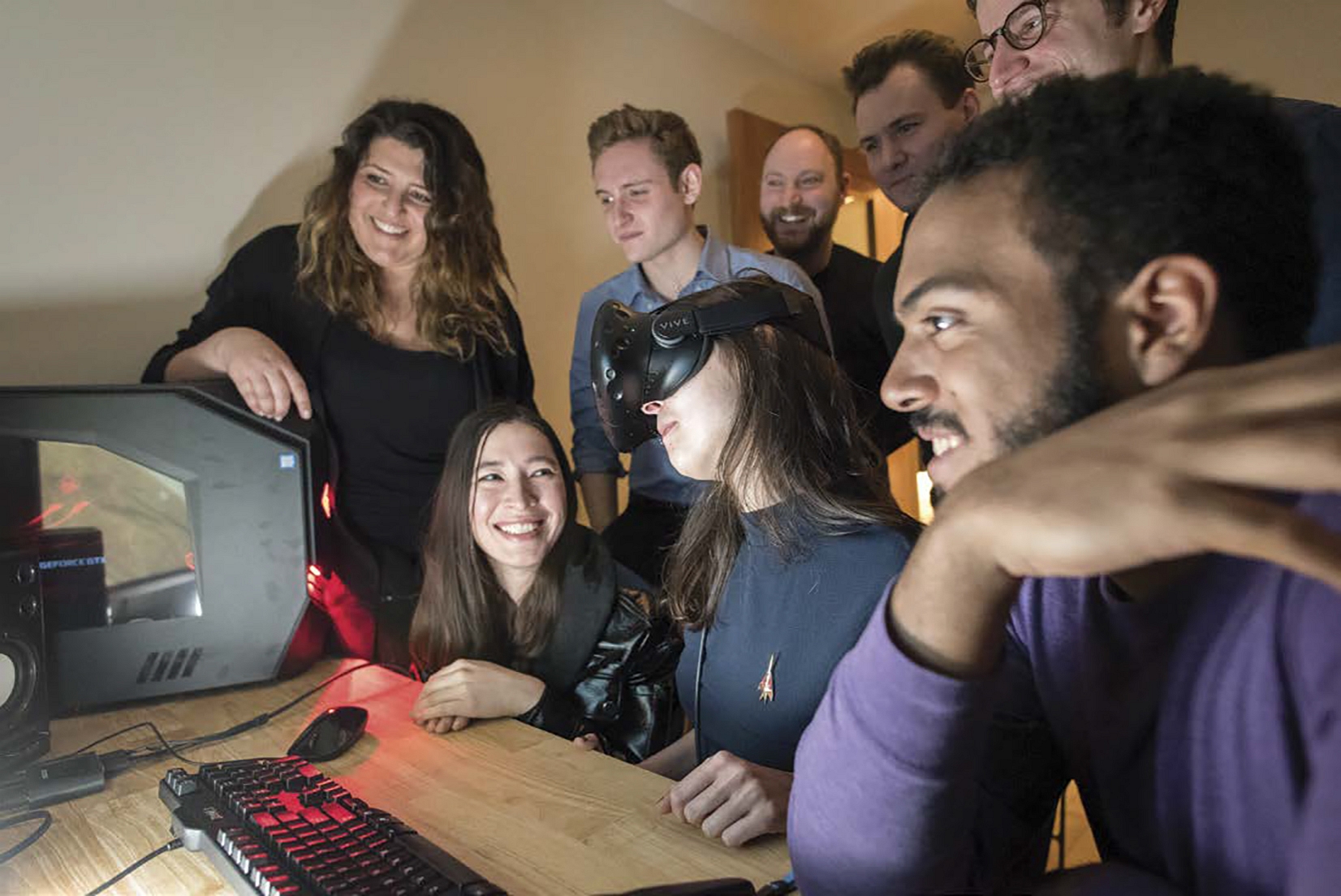
Students gather around a computer and watch as a woman wearing a virtual-reality headset tests the design of a new computer-generated simulation.
Makerspaces like Yales CCAM are springing up in communities across the country. At a makerspace, people can come together to work on projects and share ideas, equipment, and expertise. Makerspaces can take many forms. They can be located in schools and libraries or be a stand-alone facility. These spaces give community members access to equipment such as 3D printers, laser cutters, soldering irons, sewing machines, milling and machining tools, and more. Low-tech supplies like cardboard, wood, plastic, metal, and batteries are often available for creating art or prototyping ideas. In makerspaces with computers, users can experiment and learn how to use computer-aided design and graphic design software. At makerspaces, students, makers, and entrepreneurs can collaborate with others and share knowledge.
Makerspaces have also become a place where entrepreneurs can work to develop a product and build a design prototype. Tom Panzarella is the chief executive officer of Love Park Robotics, a startup company that works out of a makerspace called NextFab Studio in Philadelphia. He believes the space makes his company get taken more seriously. Youre not these two guys in a garage building a robot, right? You have your 21,000-square-foot [1,950-square-meter] production space; the boardroom here is really nice if we need to have meetings, he said in a 2014 article on NPR.org. We look a lot more established than we really are. At NextFab, members like Panzarella have access to expensive tools such as high-end laser cutters and 3D printers. Members also benefit from the skills and experiences of each other. Panzarella was able to hire a mechanical engineer at NextFab to help him attach a video camera to his wheelchairs. So, we effectively contract out to him some of our mechanical work, and its like we have a mechanical engineer on staff, Panzarella said.
At makerspaces, students participate in hands-on learning, develop critical-thinking skills, and gain confidence. They learn essential skills in science, technology, engineering, math, and the arts. In a makerspace, students will find countless opportunities to try out new technology.
CHAPTER ONE
USING MAKERSPACES FOR DESIGN AND PROTOTYPING
A t Penn State Erie, the Behrend College, engineering students are actively learning about the design and prototyping process. Because of a grant from the Schreyer Institute for Teaching Excellence, Professor Charlotte de Vries has set up a makerspace where students in her Introduction to Engineering Design course can design robots and build prototypes of their designs. I think prototyping is very important for students because theres a lot that works when you say, This is what Im going to do, and then actually trying to make it you are going to find a lot more hiccups, she said in a 2018 article on the Penn State website. In the course, students use special hardware and software to design their robots. Then they build prototypes, starting with the chassis or base frame. They add initial prototyping materials, such as cardboard, Popsicle sticks, and zip ties, to build the prototype. They use this prototype to assess the designs reliability and appearance. They also use the prototype to identify any bugs in the robots design. After making any necessary design changes, students create a more sophisticated prototype using tools such as laser cutters and 3D printers. This prototype more closely resembles the final product both in how it looks and functions.
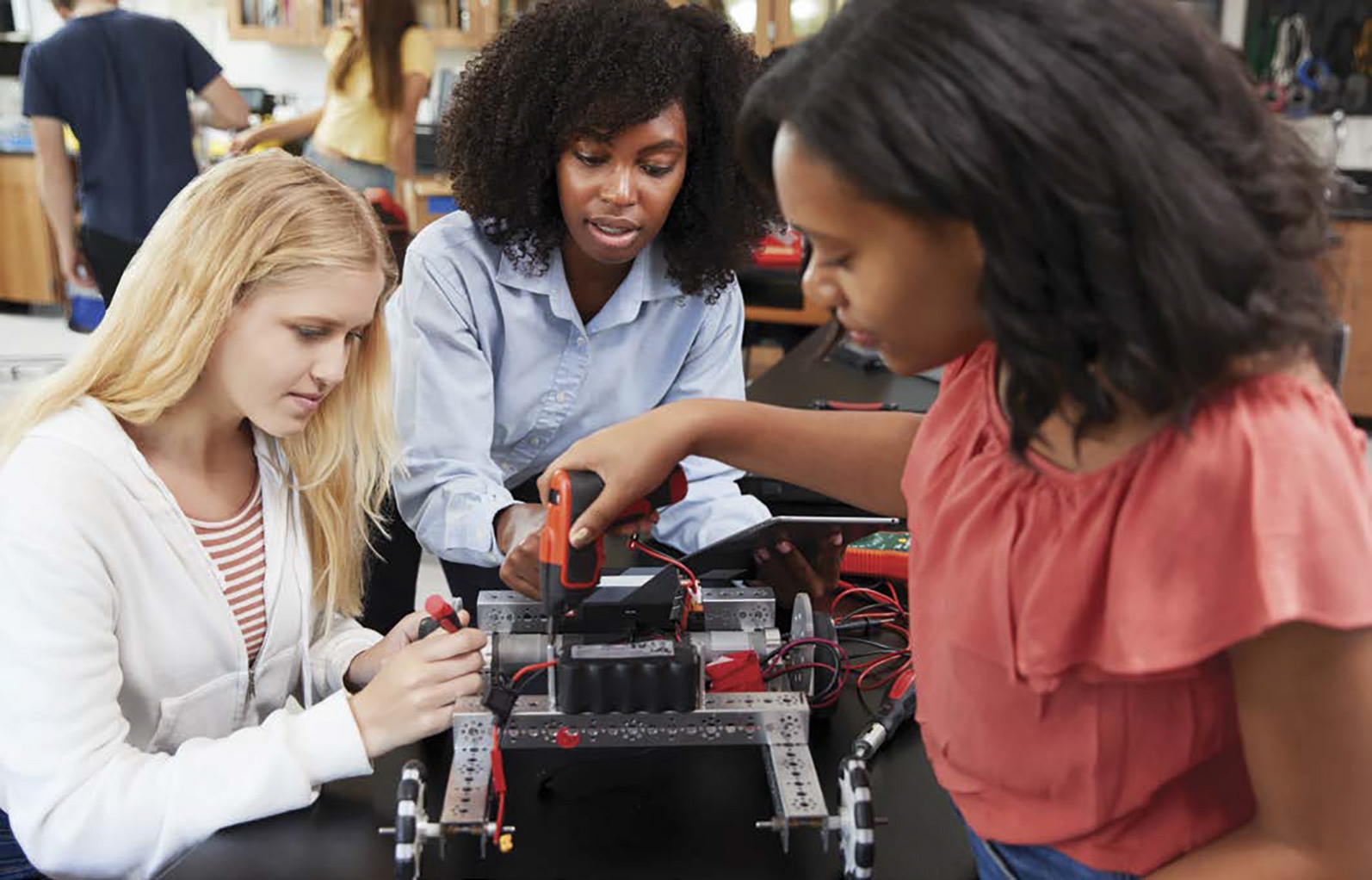
A teacher guides students and gives feedback as they practice design and prototyping skills while building a robotic vehicle.
Professor de Vriess students have created a variety of designs and prototypes, such as a miniature aircraft designed to look like the spaceship in the movie Guardians of the Galaxy. Another student created a prototype of a robotic car shaped like a pizza slice that could carry pizza from one point to another. Students agreed that working on their projects helped them better understand the actual process of designing a product. In an article on the Penn State website, student Erin Loc said the project changed how she thought about design and engineering. I began thinking of engineering as problem solving rather than just simply building things.

